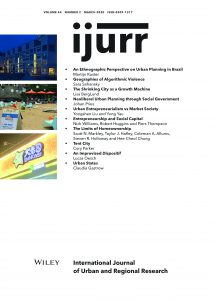How does a refugee camp urbanize? Up to now, camps have been considered as either urban assemblages made by dwellers’ improvised tactics or spaces governed by disjointed urban planning policies. I demonstrate that there is another side to the urbanism of the refugee camp. A form of coherent institutional urban planning exists as well. It takes the shape of an improvised dispositif (apparatus). One of its main effects is to render the very process of urban planning invisible. I investigate this type of urbanism on the basis of fieldwork conducted in the Al‐Hussein Palestinian refugee camp in Amman, Jordan. I argue that this improvised dispositif of urban planning—of which state and non‐state institutions are part—is the result of a balancing act that ensures the temporary character of the camp, while allowing the implementation of a form of urban development that leads toward a material homogenization between the camp and the surrounding urban space. It does this by rendering its own processes invisible and being officially referred to as ‘improvement’. By emphasizing the key features of heterogeneity, invention and provisionality, I explain that the notion of a dispositif, coined by Foucault (1980), allows us to examine how institutions improvise away from more conventional urban planning. My analysis also complements Jeffrey’s examination (2013) of institutional improvisation in the production of space, by showing that improvisation can be a form of strategic elaboration.

